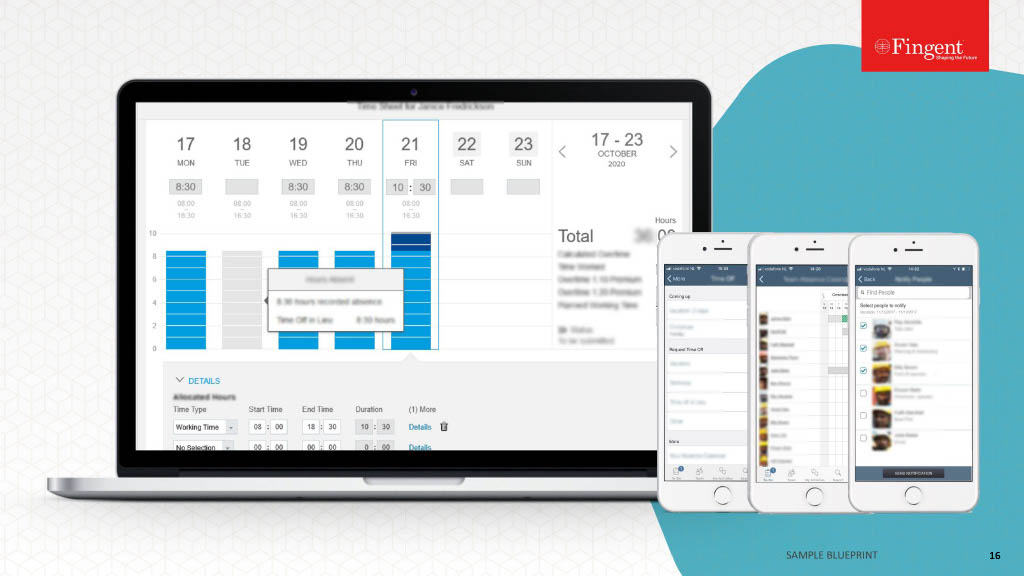Massive Response for Surface PRO 4: What does it Mean for Enterprise Mobility?
Microsoft’s Surface PRO 4 tablet is just in time, officially out since last Monday together with the Surface Book( Microsoft’s first ever laptop) and is available in the US and Canada flagship stores. “The tablet that replaces your laptop”- is how Microsoft describes its new release. Based on its pre-release hypes, it’s just natural for customers to be curious to get their hands on this sleek brand new device, but the response was too huge than predicted. The Microsoft stores were overflowing with fans and customers and we know for sure that this queue is for the new Surface devices, because not often can we see such crowd before Microsoft stores, right?!
Usually businesses are very late adopters of new devices, waiting to evaluate the device’s worth after all the hypes, post installation bugs and other manufacturing hiccups have settled down. But Microsoft’s new Surface Tablets was already pre-booked by 13 institutions from retail, financial and educational sectors, even prior to its launch. The time IDC forecasted two years before has arrived, when tablets outsell desktop and laptop PCs and when the majority (87%) of connected devices market will be tablets and smartphones.
Just in case you think this is just another passing fad, here are some research stats based on enterprise adoption of such smart devices:
- Forrester forecasts that 18% of tablet sales will be to businesses in 2017, which stresses its importance in businesses.
- By 2017, 60% of online consumers in the US and Canada will own a tablet.
- By 2018, more than 50% of users will use a tablet or smartphone for all online activities, according to Gartner.
- Studies show that tablets have seen increased adoption among employees, with more than 50% of them bringing and using their own devices or the tablets provided by companies, at least once in a week.
- A survey among mobility leaders shows that 83% of CXOs believe mobility will be among the top five digital priorities for businesses.
What we saw in front of the Microsoft outlet is just an indication of how mobile technology will rule businesses in coming years. As you can see, their numbers haven’t outgrown the number of PCs and mobiles in work spaces yet; but they still make a critical presence. And employees admit that they use these smart devices as a supplement to their laptops/PCs. Employers seem quite ready to provide smart devices to employees too, nearly one third of the companies provide tablets to their staffs at work. These portable devices, allowing immediate access to business information and resources, and running hybrid software customizable from device to device, is surging among the business workforce. This has left business managers wondering how to effectively adapt the trend to drive mobility as a part of their business technology.
The trend is forecasted to only increase in the next 5 years, though the choice of operating platforms, software and devices used at work will make the situation a bit more complex. Having access to office mail through mobile is just not sufficient for a business these days, to increase productivity and create better-informed workers. Traditional ERP system boundaries are proving to be suboptimal for meeting employee’s request for data, resources, intelligence, analytics and insights spread across different parts or groups of the organization. The employees should be able to easily collaborate and businesses should be able to seamlessly communicate with staff, without the place constraints, via integration of mobile devices, like, smartphones, tablets, PDAs and their various software and application.
Consumer technology may not be often ready for enterprise level adoption, so when different employees prefer different kind of smart devices to use at work, there arise many challenges even here, for instance,
- Most enterprise software vendors and IT departments are experts around Windows, LAMP and such old platforms. Android and iOS have a lot to learn and progress to match this, though we see them making considerable improvement nowadays.
- Certain inherent advantages of smart devices prove to be an anathema for a disciplined IT environment. For instance, the “App stores”- many IT departments remove it from smart devices for security reasons. But a policy based secure application screening is probably the right way to go.
- There is a lack of standardization working in a multi-platform environment, where plenty of popular devices stand in stark contrast, with no clear master to lead the group, unlike the desktop era, where there was windows dominance among the business PCs. For instance, Android, RIM, Windows and iOS are strong players in North America, while Symbian adds to this list in Latin America, Europe, and Asia. Similarly, different platforms, software and applications compatible for the different devices will create the situation more complex. Businesses may thus go for cross-platform applications (Hybrid applications) which can be easily deployed across the multiple platforms or devices.
With smart mobile devices, having high-end specs like, multi-core processors, high definition videos, high-resolution screen and rich yet low-cost apps in Application stores, the wireless network bandwidth consumption will be on a constant rise. The users will demand more rich media, increasing the traffic on cellular and wireless networks. Cisco reveals that the consumption of data by mobile devices will increase from 0.6exabytes in 2011 to 10.8 Exabyte in 2016; a whopping 78% annual growth rate!
Massive adoption of smart devices in enterprises and its integration in businesses is a trend that is gaining momentum and is bringing challenges, but yet, shall be here to stay as the reports show. The new paradigm shift is creating ripples around the IT ecosystem and needs a serious, thoughtful plan and response from the IT leaders.
Stay up to date on what's new

Recommended Posts

31 May 2017
IoT- Where and Why Should You Invest
The Internet of Things (IoT) is the next big thing in the world of Internet and has the potential to change life in a big way. Much have been written……

01 Mar 2016 Healthcare
Digital Business Transformation Has More to it Than You Imagined
If you thought “digitizing” your business was all about incorporating some kind of technology into your processes, and that replacing your people and papers with technology would do the trick,……
Featured Blogs
Stay up to date on
what's new




















































